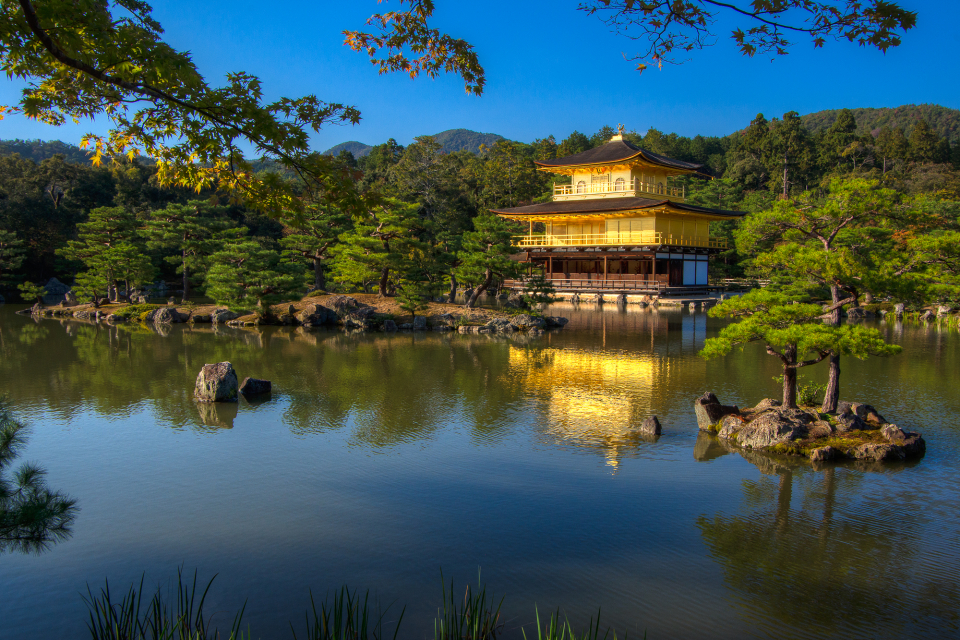There is good reason that most visitors to Kyoto have Kinkaku-ji (Temple of the Golden Pavilion) high on their must-see list. In any season, the exquisite and serene beauty of the small 3-story temple surrounded by graceful, dark-green pines, standing above a usually calm pond, its reflection shimmering brilliantly, is not to be missed. This means of course that the serenity projected by this gorgeous structure and grounds, must be matched by the calmness within oneself, as you will be confronted with bus and sight-seeing crowds. They are for the most part very well-behaved (this is Japan after all!) and if the patient photographer waits, he or she will be rewarded with people-free images.
Google this temple and you will see countless images similar to the first photograph presented here. This is the more or less standard Golden Pavilion shot ... and for good reason! The setting was seemingly designed for camera on tripod, canvas on easel. But just as when you photograph Delicate Arch at sunset and Mesa Arch at sunrise, you should work to achieve your own vision and interpretation of those iconic images.
What about expressing that very colourful scene in black and white? Or perhaps a side glance teasingly hinting at its overall beauty? Finally a view as if one just happened upon the temple, peeking through pine boughs, with only its blinding, watery reflection clearly discerned. Any which way you look at the Golden Pavilion, it is a marvel of composition and setting.
The building looks quite old, and indeed the original temple dates back to the late 1300's. But mimicking the Zen Buddhist precept of life as illusion, what we see before us in only 60 years old. In 1950 a monk named Hayashi Yoken burned down the 550 year-old edifice. Was he merely insane -- as the court that tried him found -- or was he besotted by the beauty of the temple and compelled to destroy that which he so loved? If that sounds the stuff of a novel -- vivid, poetic, melodramatic, tragic -- it is. Yukio Mishima -- one of the giants of 20th century Japanese literature, and still considered a vivid, poetic, melodramatic and tragic figure -- wrote a fictionalized account of the Golden Temple and its effect on the obsessed monk.
Whatever the truth of the temple's burning, as the phoenix atop the building seems to imply, from the ashes of its destruction, it stands again. And, we are thankful for that.


